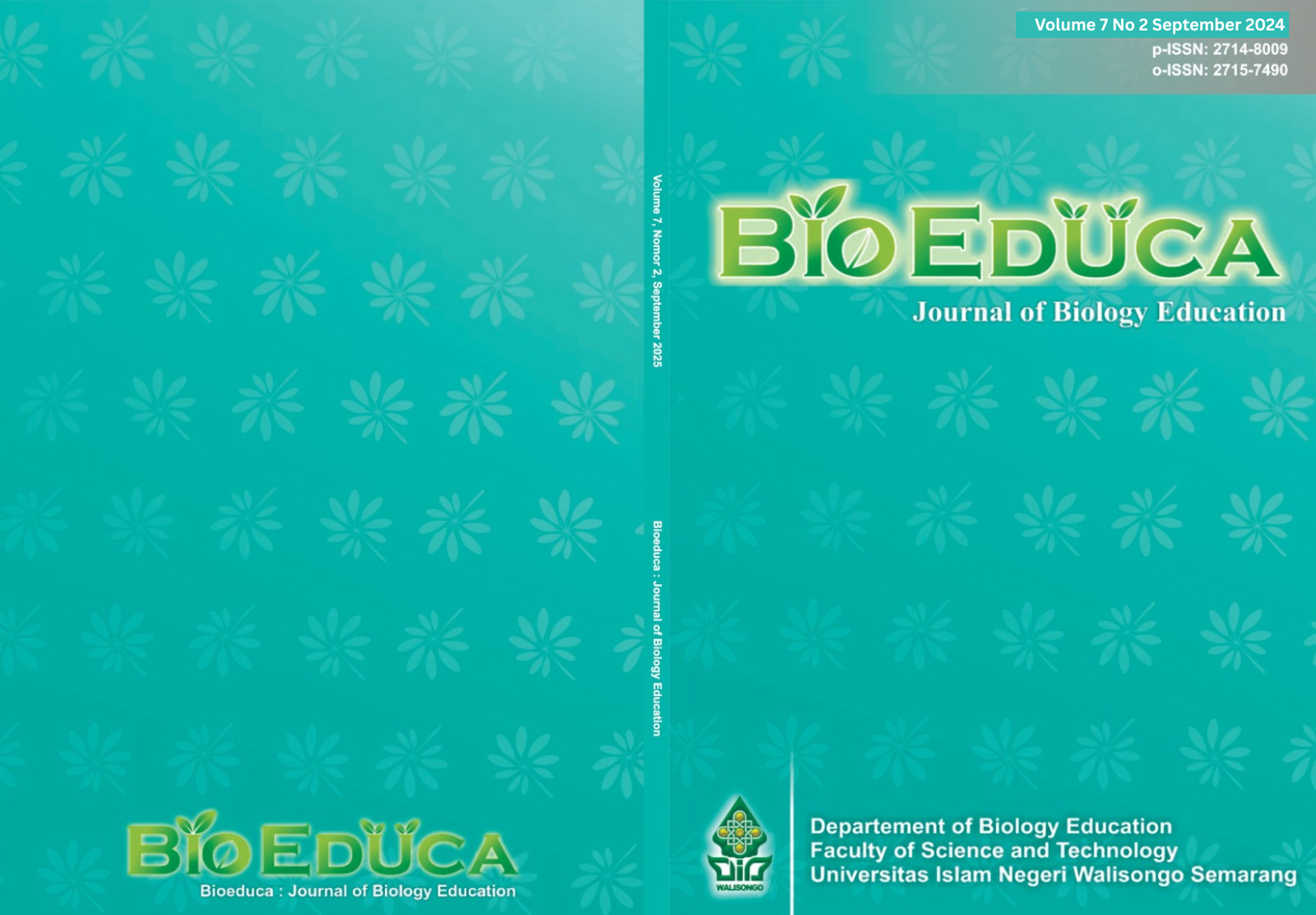Feasibility of The Enrichment Module of Biodiversity Utilization Based on Medicinal Plants Sub-Material
Main Article Content
Abstract
Students' abilities in the learning process are, of course, different, so the grades obtained are also different. Enrichment modules are used as alternative teaching materials for students with more abilities and have achieved minimum completeness criteria to increase and deepen knowledge about local potential. The enrichment module created presents the use of biodiversity, especially medicinal plants in Tirta Kencana Village, Bengkayang Regency, so that students can get to know the types of medicinal plants and their benefits and how to process them. This research aims to test the feasibility of the submaterial enrichment module for utilizing biodiversity. The method used is Research and Development (R&D) with the Borg and Gall model. The enrichment module was validated by 5 validators at SMA, namely 2 lecturers and 3 biology teachers. Data analysis using the Lawshe formula obtained a CVI value of 0.99 so that the enrichment module was declared valid or suitable for use as teaching material in the learning process on the sub-material of using biodiversity
Downloads
Article Details

This work is licensed under a Creative Commons Attribution-ShareAlike 4.0 International License.
The copyright of the received article shall be assigned to the journal as the publisher of the journal. The intended copyright includes the right to publish the article in various forms (including reprints). The journal maintains the publishing rights to the published articles. Authors are allowed to use their articles for any legal purposes deemed necessary without written permission from the journal with an acknowledgment of initial publication to this journal.

This work is licensed under a Creative Commons Attribution-ShareAlike 4.0 International License.
References
Anggraini, W. (2018). Keanekaragaman Hayati Dalam Menunjang Perekonomian Masyarakat Kabupaten Oku Timur. Jurnal Aktual STIE Trisna Negara, 16(2), 99-106.
Arsyad, A. (2014). Media pembelajaran. Jakarta: Raja Grafindo Permai.
Aryusmar. (2011). Karakteristik Bahasa Jurnalistik Dan Penerapannya Pada Media Cetak. Jurnal Humaniora, 2 (2), 1209-1218.
Daryanto, (2013). Inovasi Pembelajaran Efektif. Bandung: Yrma Widya.
Depdiknas. 2008. Panduan pengembangan bahan ajar. Jakarta: Depdiknas
Diko, M. (2015). Ragam Jenis Kertas. http://www.gramediaprinting.com/.
Eefremila, Evy, W., & Lolyta, S. (2015). Studi Etnobotani Tumbuhan Obat Oleh Etnis Suku Dayak Di Desa Kayu Tanam Kecamatan Mandor Kabupaten Landak. Jurnal Hutan Lestari, 3(2), 234-246.
Fatmawati, E., & Siti, N. H. (2018). Penerapan modul pengayaan berstrategi PQ4R untuk meningkatkan hasil belajar siswa. E-Journal Pensa, 6(2), 208-212.
Ghiyaats, A. (2019). Analisis Kelayakan Isi Buku Petunjuk Praktikum Anatomi Blok 1.3 Terhadap Mahasiswa Kedokteran FK UNS Angkatan 2018. Diakses dari https://osf.io/gt2yk/download/?format=pdf
Lawshe, C. H. (1975). A Quantitive Approach to Content Validity. Personnel Psychology. 28(4), 563-575.
Nurmasari, Syamswisna, & Andi, B. T. (2021). Kelayakan Ensiklopedia Pada Submateri Pemanfaatan Keanekaragaman Hayati Dari Hasil Etnobotani Tumbuhan Obat. Didaktika Biologi: Jurnal Penelitian Pendidikan Biologi, 5(2), 85-92.
Prastowo, A. (2011). Panduan Kreatif Membuat Bahan Ajar Inovatif; Menciptakan Metode Pembelajaran Yang Menarik Dan Menyenangkan. Jogjakarta: Diva Press
Purnama, S. (2010). Elemen warna dalam pengembangan multimedia pembelajaran agama Islam. Jurnal AI-Bidayah, 2(1), 113-129.
Rahmawati, L.N., Sudarmin, Pukan, K.K. (2013). Pengembangan Buku Saku IPA Terpadu Bilingual Dengan Tema Bahan Kimia Dalam Kehidupan Sebagai Bahan Ajar di Mts. Unnes Science Educational Journal, 2(1), 157-164.
Sugiyono. (2019). Metode penelitian pendidikan. Bandung: Alfabeta.

